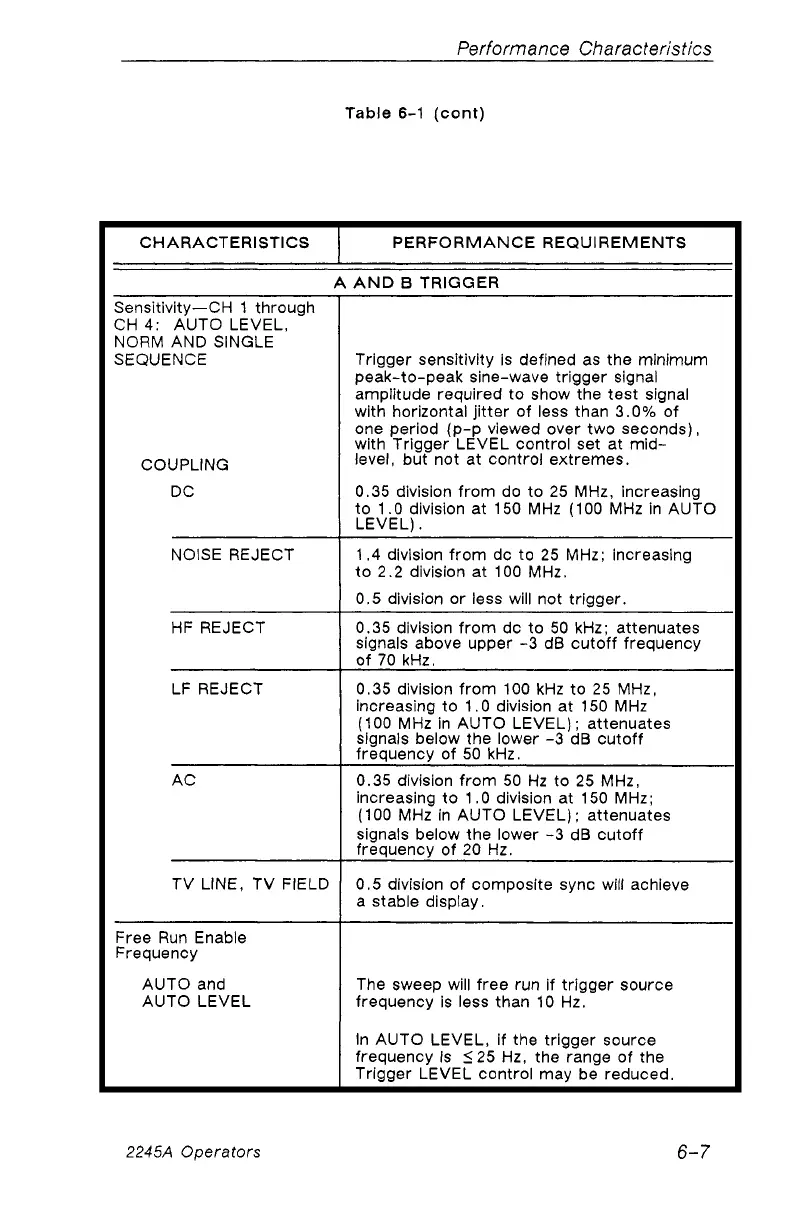Performance Characteristics
Table 6-1 (cont)
CHARACTERISTICS PERFORMANCE REQUIREMENTS
A AND B TRIGGER
Sensitivity—CH 1 through
CH 4: AUTO LEVEL,
NORM AND SINGLE
SEQUENCE
COUPLING
DC
Trigger sensitivity is defined as the minimum
peak-to-peak sine-wave trigger signal
amplitude required to show the test signal
with horizontal jitter of less than 3.0% of
one period (p-p viewed over two seconds),
with Trigger LEVEL control set at mid
level, but not at control extremes.
0.35 division from do to 25 MHz, increasing
to 1.0 division at 150 MHz (100 MHz in AUTO
LEVEL).
NOISE REJECT 1.4 division from do to 25 MHz; increasing
to 2.2 division at 100 MHz.
0.5 division or less will not trigger.
HF REJECT 0.35 division from do to 50 kHz; attenuates
signals above upper -3 dB cutoff frequency
of 70 kHz.
LF REJECT
0.35 division from 100 kHz to 25 MHz,
increasing to 1.0 division at 150 MHz
(100 MHz in AUTO LEVEL); attenuates
signals below the lower -3 dB cutoff
frequency of 50 kHz.
AC 0.35 division from 50 Hz to 25 MHz,
increasing to 1.0 division at 150 MHz;
(100 MHz in AUTO LEVEL); attenuates
signals below the lower -3 dB cutoff
frequency of 20 Hz.
TV LINE, TV FIELD
0.5 division of composite sync will achieve
a stable display.
Free Run Enable
Frequency
AUTO and
AUTO LEVEL
The sweep will free run if trigger source
frequency is less than 10 Hz.
In AUTO LEVEL, if the trigger source
frequency Is <25 Hz, the range of the
Trigger LEVEL control may be reduced.
22454 Operators
6-7
